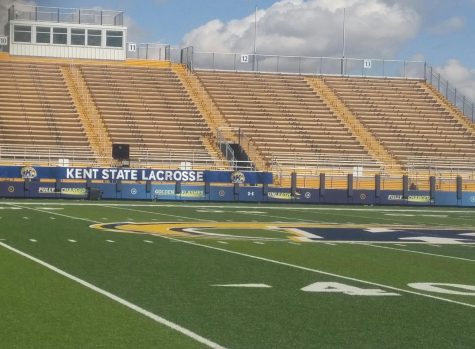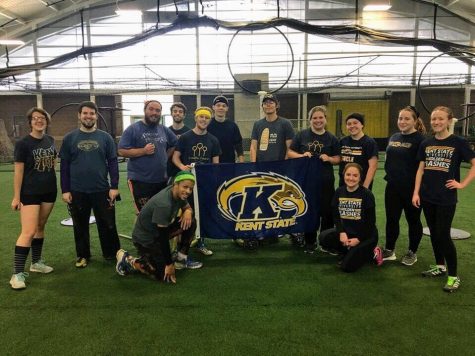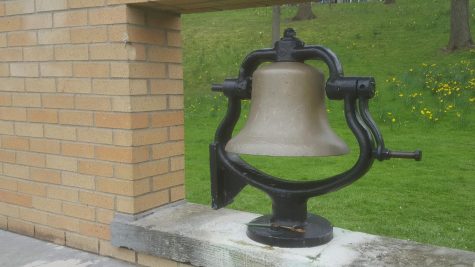Stewards fight for better water quality 50 years after Cuyahoga River fire
May 8, 2019
Listen to “Stewards of the Cuyahoga” on Spreaker.
This year marks the 50th anniversary for the burning of the Cuyahoga River in Cleveland, Ohio.
The fire made national headlines and caused an estimated $100,000,000 worth of damage to two railroad bridges. It also sparked dedication and vested interest in water quality from the government and environmental groups like The Friends of the Crooked River. The group of 100 environmental stewards now focus their efforts on busting local dams.
To the beat of a banjo on a Tuesday night in a clubhouse near silver lake, fun, food and friends come together with a common goal.
“When do I pay our dues?” a member asked.
“You guys can go ahead and pay tonight,” the woman at the front door said.
They call themselves the Friends of the Crooked River: defenders and stewards of the Cuyahoga River and all its glory.
“They get things done they’ve been the advocate way before anyone else was thinking about it” James Norwood said.
Young and old defenders who all love the water, brought together by one of the greatest defenders of them all.
“May good to see you,” Elaine Marsh said.
Marsh is the president and founder of the group almost 30 years ago.
“I was a paddler and when you’re a paddler and the water quality is very bad, you know very well where its coming from, and so I wanted the river to be better so I could have more fun paddling. And it’s like anything — you get involved and I just do love the Cuyahoga River and Lake Erie,” Marsh said.
Elaine loves the river so much, she’s carried the group for almost 30 years now, sponsoring kayak races cleanups, public discussions, tree planting and even dam busting.
“Dambusters are all people who want to bust dams in order to restore water quality. And then at the same time, we are very interested in keeping archaeological in historic value and want to whatever we do to honor those, that historyDams started popping up in the 1820’s, to divert water for agriculture, transport goods, and used by factories for processing, cooling and power,” Marsh said. “Starting in 1996, (the Ohio EPA) studied the impact of dams on the Cuyahoga River, and around 2000. They recommended that all obsolete dams, that is dams that no longer have a function of technological function that they be studied for removal.”
Since 2005, The Friends of the Crooked River have been dam busting. The Kent Dam was modified 2006, the Monroe Falls dam, Powerhouse and Sheraton Dams in Cuyahoga Falls were all removed 2013.
Now the Friends of the Crooked River are a part of a joint collaboration to remove the Gorge Dam in Cuyahoga Falls.
It’s about a quarter-mile walk to the dam. One can hear it as they get closer. A sign at the entrance of the Gorge Metro Park points left to the “Falls.”
Some may say it’s ironic because most people think the dam is a waterfall.
People sit, observe and listen to it. Even a deaf man typed out on a phone to me that he could feel the power of the water as he sat near it.
The dam is huge. It oozes yellowish water. At first glance it does look like a waterfall, but upon closer observation the industrial components like the metal grates in the water, the pipes and ladders on the side can be seen — signs that the structure was man-made.
“One of the main reasons that we are removing these dams is to restore water quality,” Marsh said. “And all of these projects are not isolated; they have to do with all of the communities of North still higher investment in clean water infrastructure. So they have benefits for water quality for fish, for the bugs that live in the sediment. And also, they have tremendous benefit for quality of life, recreation, both on the water and along the land. And they all what we view as being one of the most important benefits is that it will create a place that will be a tourist destination, and a destination for young families to come live work and play here and to stay here.”
In a recreation presentation room, all 200 chairs were filled. Volunteers had to bring in more for the bright-eyed and attentive bunch who came to hear about the Gorge Dam’s removal.
“How many do you think there are in the area?” I asked.
“Dambusters? Well, you saw 250 people came out on this beautiful night in order to voice their support for it. So that’s a pretty good representation that there’s a lot of them out there. We ran out of space on the sign in sheets, we ran out of agendas. We didn’t run out of buttons or pens, though,” Marsh said.
Monine McBride was in the packed room. She, her husband and two young children live on the water in Cuyahoga Falls. They own a kayaking shop called Burning River Adventures and said the river is so important to community members like her.
“The Cuyahoga River and Gorge Dam are a top priority for our community. My husband grew up along the river and that’s why we moved here he couldn’t be away from it,” she said.
McBride and her family are paying members of Friends of the Crooked River and have noticed a difference.
“Since the two damn removals, the water quality greatly improved. Before it was much deeper muddier, brown, had a little bit of a smell, now it’s clear. It’s more shallow. You can see to the bottom and the fish swimming,” McBride said.
But Elaine said people don’t just wake up one morning and decide to remove a dam. It takes time and serious cash.
The Kent Dam took seven years to modify and cost $5 million. The Monroe Falls took eight years to remove and cost $2.6 million. The Powerhouse and Sheraton Dams took 13 years to remove and cost $1 million.
Now, the Gorge Dam will cost over $70 million to remove.
That’s a lot of money, but Elaine said what will happen next will be well worth it.
“Before the dam went in, this area was one of the largest tourist attractions in the city in the state of Ohio, and certainly the largest in Northeast Ohio,” Marsh said. “So we have a lot of tourists that come here now, but there will be even more because that dam sits right in the middle of that two mile stretch, where we have those rapids. So it was very beautiful, its beautiful now and it will return to its original grandeur.”
But Elaine said the work isn’t done yet. After the Gorge Dam, they’ll be going after the Brecksville dam and continuing their fight for better water quality.
“There are a lot of issues still left to be resolved on the river,” Marsh said. “There are nutrients that have to be resolved especially for lake erie and run off as well.”
Christiana Ford is a Kent State journalism student. Contact her at [email protected].























